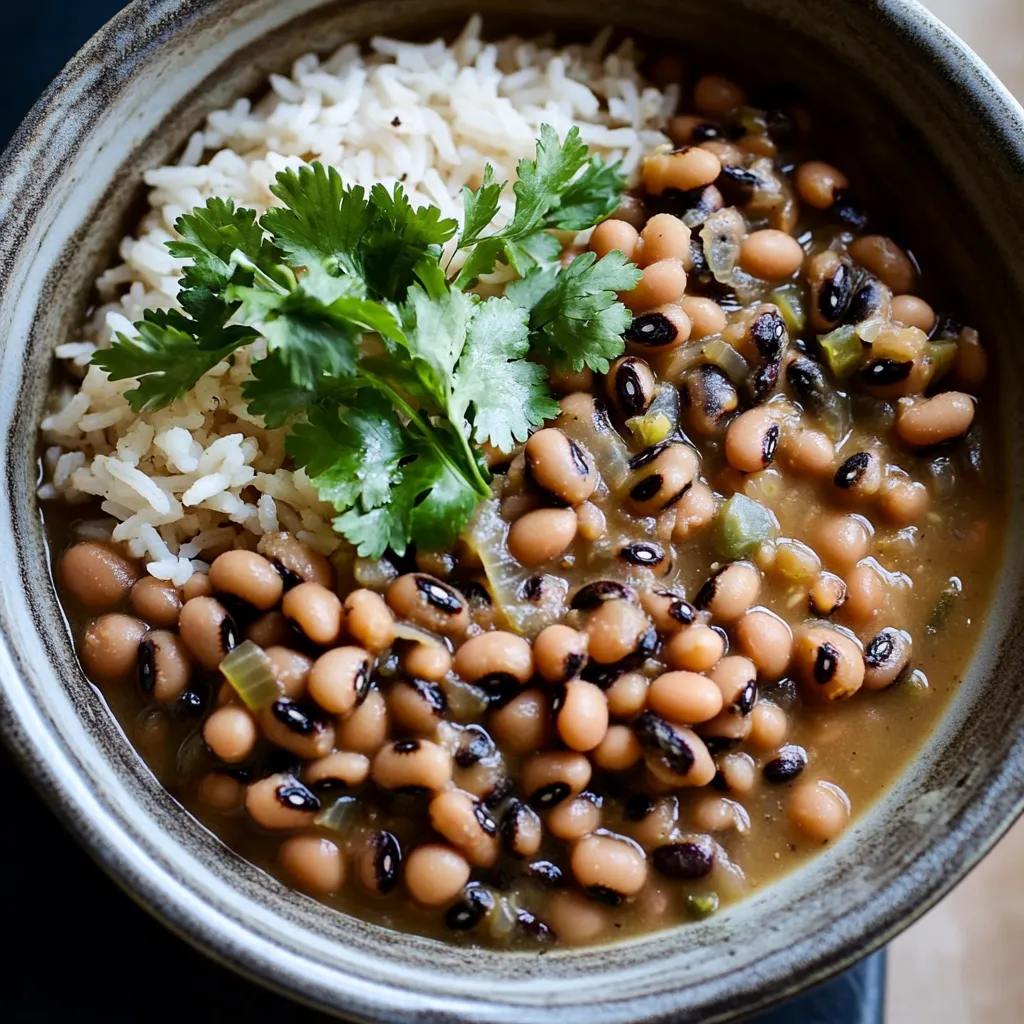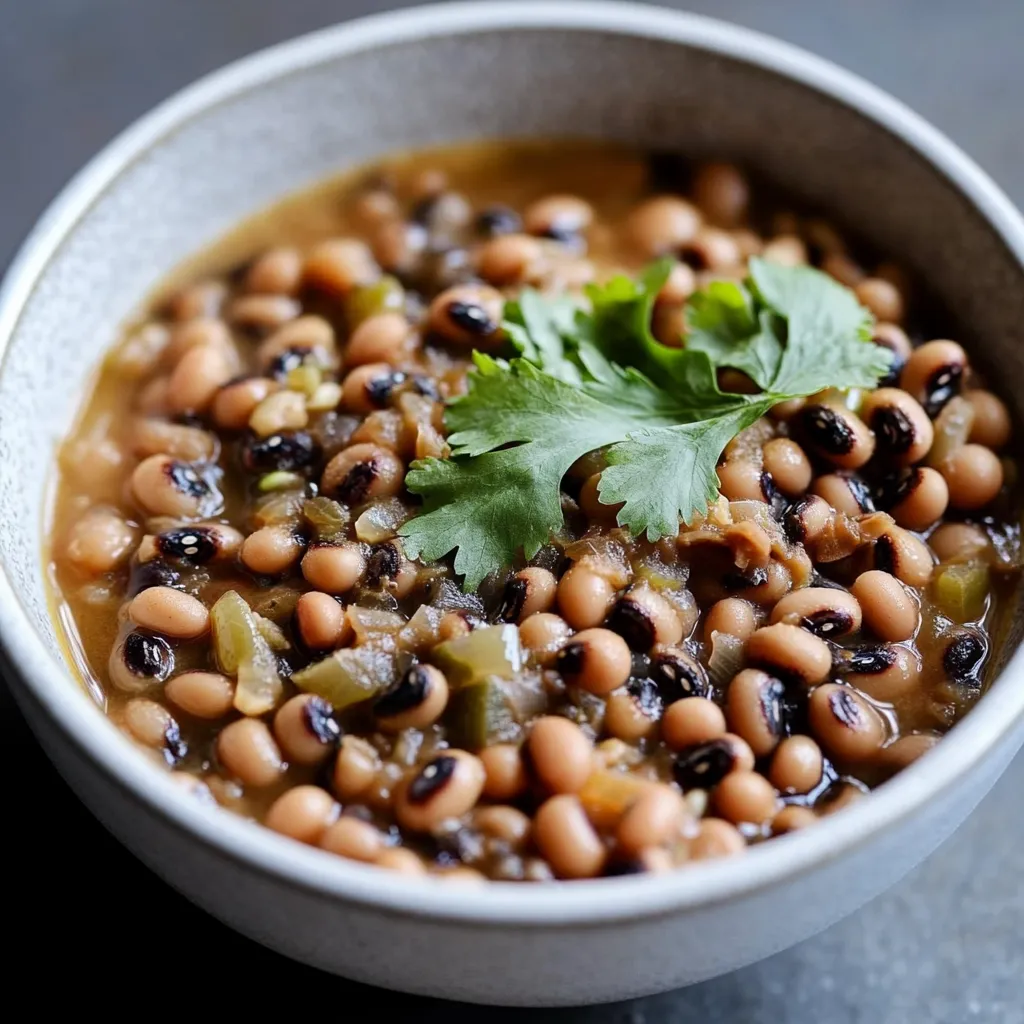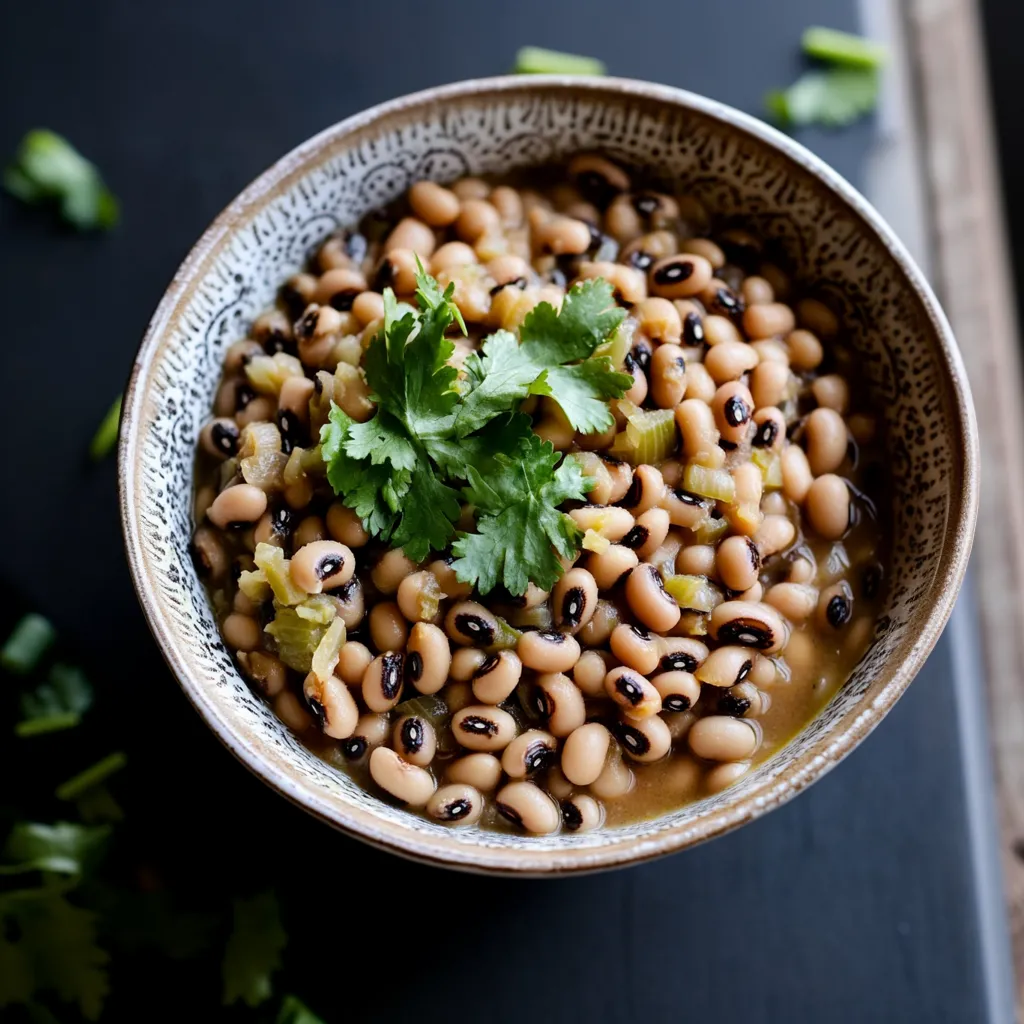 Pin it
Pin it
Southern cuisine cherishes black eyed peas for their rich history and amazing taste. This plant-based take puts a spin on the classic recipe, delivering all that smoky, creamy goodness without animal products while staying true to its deep cultural roots.
The day my Southern grandma told me she liked my vegan version better than her old recipe, I was over the moon. I'd tried so many times to nail that smoky taste, and finally found the magic mix of smoked paprika and liquid smoke that hit all the right notes we wanted.
Key Ingredients
- Black Eyed Peas: Go for smooth, unspotted dried ones with clear beige color and that distinctive black spot - they'll cook more evenly and taste better
- Smoked Paprika: This makes our smoke base - worth spending extra on good Spanish or Hungarian kinds for real flavor
- Liquid Smoke: Just tiny amounts change everything, giving that deep taste that makes this dish stand out
- Aromatics (Onion, Celery, Bell Pepper): This flavor trio starts everything off - pick crisp, new veggies for best results
- Soy Sauce: Brings that savory punch that takes the place of pork - grab naturally brewed types for deeper flavor
Step-By-Step Guide
- Getting Ready:
- Cover black eyed peas with cool water (at least 2 inches above) and let them sit overnight. Cut all your veggies the same size so they cook evenly. Get your broth ready and line up all spices before you start cooking.
- Making The Flavor Start:
- Warm olive oil in a thick-bottomed pot over medium heat. Cook diced onions until see-through (about 5-7 minutes). Toss in celery and bell pepper, cooking until soft but still colorful. Add garlic last, just until you can smell it to keep it from burning.
- Putting It Together:
- Empty and wash the soaked peas well. Throw them in with the veggies. Pour broth over everything, making sure peas are under about an inch of liquid. Drop in bay leaf and let it start bubbling gently. Turn down heat and cook with lid partly on, stirring now and then.
- Building Taste:
- After 20 minutes, check if peas are getting soft. Add small bits of smoked paprika and liquid smoke, tasting as you go. Mix in soy sauce bit by bit for deep flavor. Keep cooking until peas feel right when you bite them (usually 35-45 minutes total).
- Last Touches:
- Taste and fix smoke elements and salt levels. Add fresh black pepper. Let it rest 5-10 minutes before serving so flavors can mix well.
 Pin it
Pin it
In my Southern childhood, black eyed peas meant more than just eating - they connected us to our past. My grandma always said each pea stood for money coming your way in the new year. Now I can share this tradition with my vegan friends without losing any of the soul-warming flavors.
Tasty Seasonal Changes
During hot months, I like to brighten this dish with fresh thyme or sage added just before finishing. When it's cold outside, a little cayenne pepper brings extra warmth. You can easily tweak it based on what you like and what's in season.
Storage Tips
These vegan black eyed peas actually taste better after a day or two as the flavors blend more. I keep mine in sealed glass containers in the fridge where they stay good up to five days. For longer keeping, put portions in freezer containers with some of their juice - they'll stay tasty for three months.
Pairing Ideas
Eating these with collard greens isn't just tradition - the slight bitter edge of the greens works perfectly with the creamy, smoky peas. I love pouring mine over brown rice or using cornbread to soak up all that tasty liquid. For something different, try them on quinoa or next to roasted sweet potatoes.
 Pin it
Pin it
Pressure Cooker Method
Using an Instant Pot makes this nearly effortless. After cooking the veggies with the Sauté button, add everything else and cook on high pressure for 15 minutes, then let pressure drop naturally. It tastes just as good, though cooking on the stove lets you better manage how soft the peas get.
Fixing Common Problems
When peas stay hard, they're usually old or your cooking liquid isn't hot enough. Always buy fresh peas and keep them gently bubbling while cooking. If they're still firm after the regular cooking time, keep cooking in 5-minute chunks until they feel right.
What makes this vegan version so great is how it respects tradition while welcoming modern food choices. Every time I cook this dish, I think about how food brings folks together, no matter what they eat. The smoky smell filling the kitchen, watching the peas slowly soften, and seeing the flavors deepen - it's like a slow, mindful practice that connects old ways with today's cooking.
Health Benefits
These vegan black eyed peas pack a ton of good stuff. Besides protein, they're full of folate that helps cells grow and supports DNA creation. The bell peppers bring vitamin C that helps your body use the iron in the peas better. Pair them with dark greens like collards and you've got a meal that boosts your immune system and overall health.
Local Differences
As I've traveled around the South, I've found cool local twists on black eyed peas. Folks in Louisiana might add some filé powder for a Creole feel. Georgia cooks sometimes put in a splash of sorghum for sweetness. Some Mississippi families can't make them without diced jalapeños for heat. These changes show how one food can tell many stories, each true to its local style.
Meal Planning Ideas
These peas work great for weekly food prep. I often make twice as much on Sundays, keeping some in the fridge and freezer. They can become different meals: classic with rice, turned into cold salad with chopped veggies and dressing, or blended into a smooth dip. Just cook them slightly less if you plan to heat them up later in the week.
Serving To Guests
I've found these vegan black eyed peas always get people talking at gatherings. Even meat lovers are surprised by how rich they taste. For parties, I make a 'lucky peas station' with toppings like chopped tomatoes, green onions, hot sauces, and fresh herbs so guests can fix their own bowls. It's a fun way to share both food and history.
More Than Just New Year's
While everyone thinks of New Year's Day, these peas deserve spots at tables all year long. They fit perfectly at Juneteenth celebrations, family get-togethers, and Sunday dinners. I've even brought them to wedding rehearsal meals, where they stand for families joining together. Just make sure to serve them with the respect they deserve.
Soaking Secrets
How you soak really changes your final result. After trying lots of ways, I've found soaking at room temperature for 8-12 hours works best. Some cooks like adding kombu seaweed while soaking to make beans easier to digest and add minerals. Never put salt in during soaking though - it makes the skins tough.
 Pin it
Pin it
